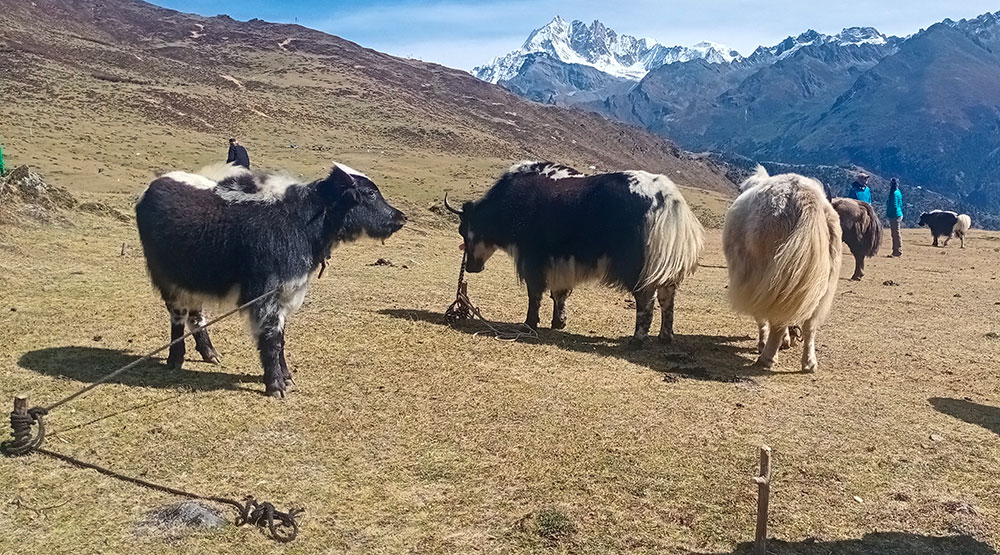… lack of consistent efforts in upscaling production hinders marketing
Yangyel Lhaden
Highlanders in the country have huge potential in producing two special French cheeses as a niche product in the international market.
In a recent training session, around 75 litres of yak milk was collected daily and it produced 18 kilograms (kg) of Gumdel and 48kg of Tomme cheese, both high-end French cheese.
There are 7,639 milking yaks across 10 highland dzongkhags. Considering an average milking period of 153 days per milking yak, the total milk production is estimated at 1.1 million litres on average, according to livestock statistics from 2022.
However, the yak population has been dropping over the years. In 2006, there were 52,911 yaks, which decreased to 41,918 in 2019 and further down to 40,897 in 2020 and there were only 38,642 yaks in 2021, according to livestock statistics published by the National Statistics Bureau.
Program Director of the National Highland Research and Development Centre, Dr Vijay Raika, said that the number of yak herders has been declining due to numerous factors, such as the migratory lifestyle hindering mainstream development efforts and alternative income sources like foraging for Cordyceps playing a role in the waning interest in yak herding.
He said that there was a huge potential for high-end yak cheeses in the international market and the cheese from yak milk intensified the distinctive qualities of Himalayan milk with rare and premium yak cheese. “The yak herders produce a range of yak milk products, but their market faces challenges due to poor road accessibility and the remote dispersion of yak herds, making transportation difficult.”
This high-end cheese is priced at Rs 410 for 200g of Tomme made from cow’s milk in India’s online grocery store called Big Basket.
The Department of Livestock (DoL) began producing high-end cheeses in 2021 through a project supported by the EU-Bhutan Trade Support Project and the products were first showcased at the fifth Royal Highland Festival in Laya.
The DoL is currently promoting two kinds of cheeses—Tomme and Gumdel. “ Tomme has proven successful in production and we are working on expanding its market, while Gumdel cheese, introduced in the country in 2021, has gained recognition for its unique flavour and quality,’” Dr Vijay Raika said.
He said that currently, due to the lack of a consistent project in place for yak cheese—with only sporadic small-scale projects—the project is currently being implemented on a pilot basis in Thimphu and Paro. “The DoL is actively seeking project support to address this gap and in the event of securing a substantial project, one of the key areas of the focus will be the value chain.”
United Nations Developments Programme offered a small grant to enhance the economic stability of the highland communities to contribute to developing the yak industry in Bhutan
Through this project, a training of trainers programme was conducted in Nubri chiwog in Paro. “The aim of this training was to equip individuals with the necessary knowledge and skills, fostering the transfer of expertise to the younger generation,” Dr Vijay Raika said.
To support the yak-rearing practice, the livestock department established Bhutan Yak Federation to encourage community cooperation. This federation consists of regional yak cooperatives throughout the country and aims to promote collaboration and relationships among herders.
“The primary objective is to attain shared prosperity, safeguard herders’ livelihoods, and contribute to the sustainable management of highland resources,” Dr Vijay Raika said.
The DoL is also focusing on initiatives to enhance income sources for yak herders through product diversification such as wool fibre, improve genetic and animal health and use natural resources through programmes such as rangeland restoration.


